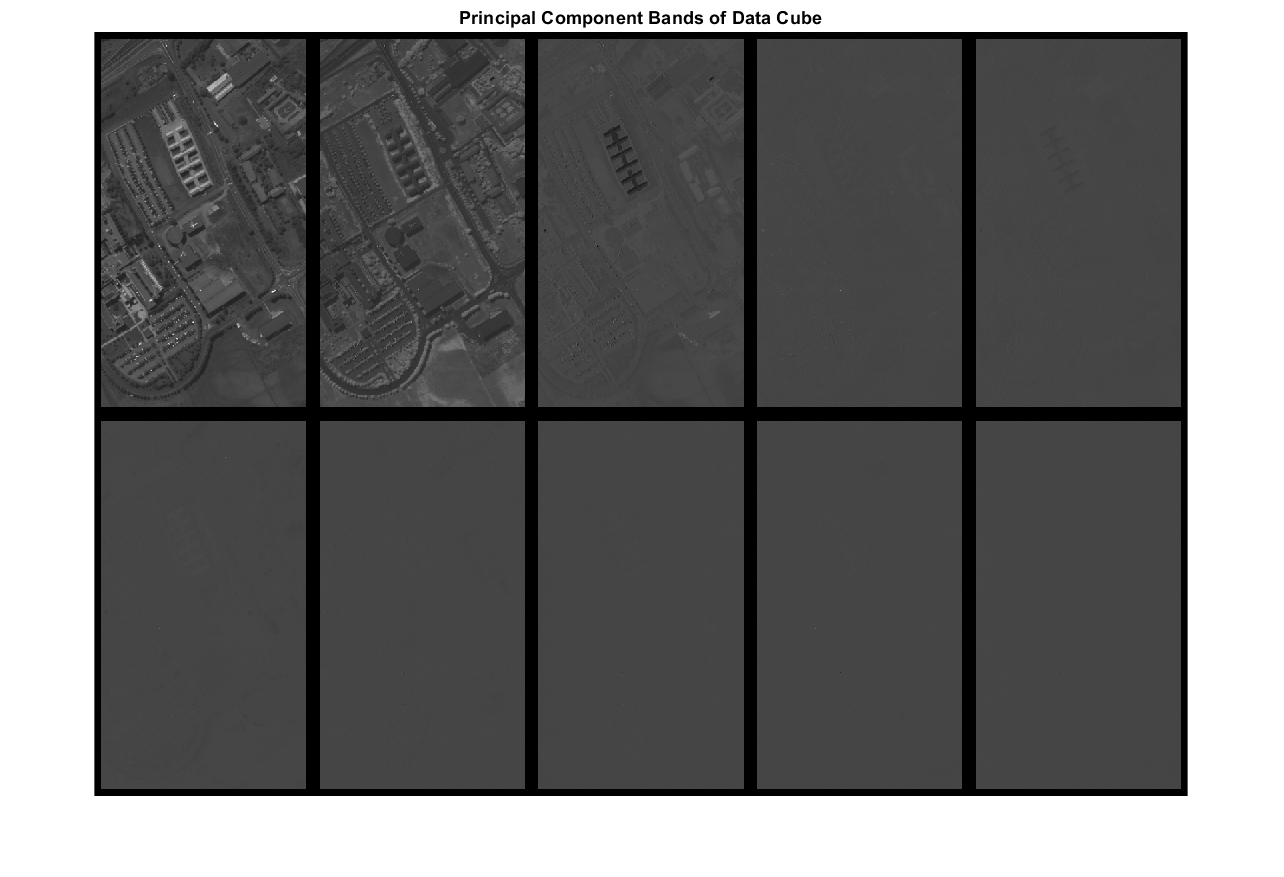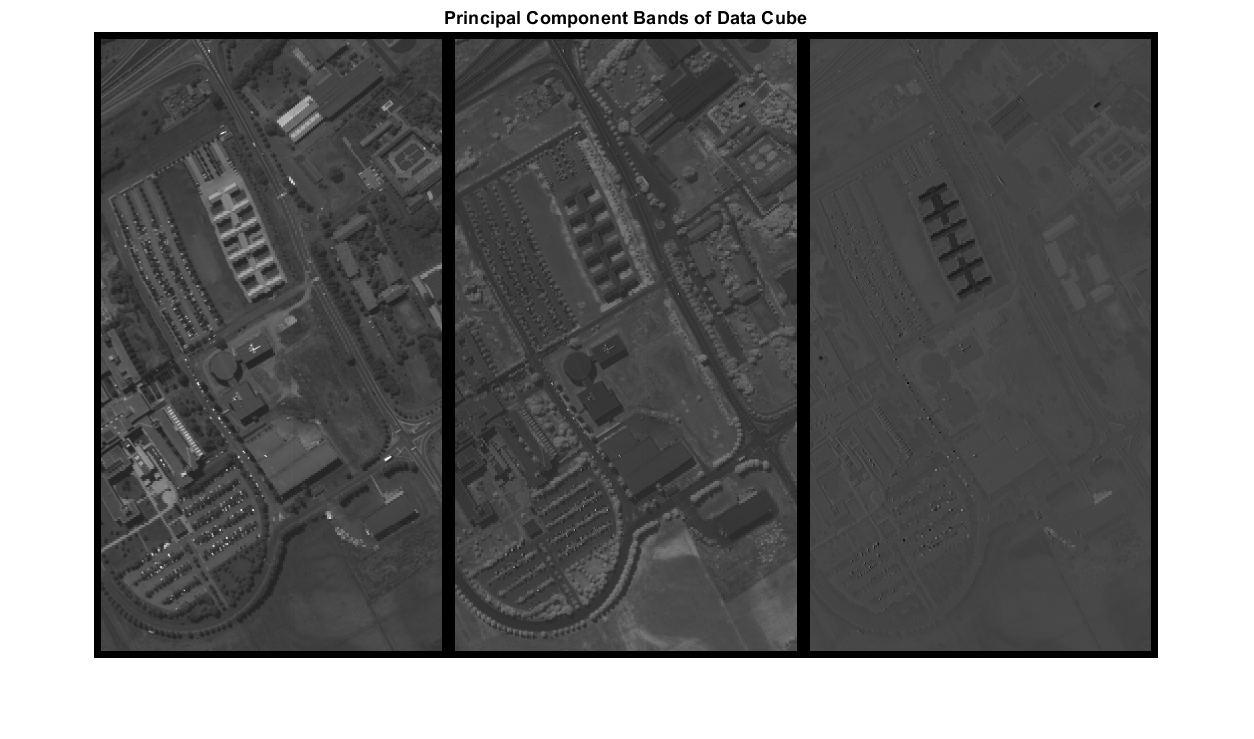hyperpca
Principal component analysis of hyperspectral data
Syntax
Description
outputDataCube = hyperpca(inputData,numComponents)numComponents. To achieve spectral
dimensionality reduction, the specified number of principal components must be less than the
number of spectral bands in the hyperspectral data cube
inputData.
[
also returns the principal component coefficients estimated across the spectral dimension of
the hyperspectral data cube.outputDataCube,coeff] = hyperpca(___)
[
returns the percentage of variance retained by the principal component bands in addition to
the output arguments mention in the previous syntaxes.outputDataCube,coeff,var] = hyperpca(___)
[___] = hyperpca(___,
specifies the principal component analysis (PCA) method and additional options by using the
name-value arguments.Name=Value)
Note
This function requires the Hyperspectral Imaging Library for Image Processing Toolbox™. You can install the Hyperspectral Imaging Library for Image Processing Toolbox from Add-On Explorer. For more information about installing add-ons, see Get and Manage Add-Ons.
The Hyperspectral Imaging Library for Image Processing Toolbox requires desktop MATLAB®, as MATLAB Online™ and MATLAB Mobile™ do not support the library.
Examples
Input Arguments
Name-Value Arguments
Output Arguments
Version History
Introduced in R2020a



